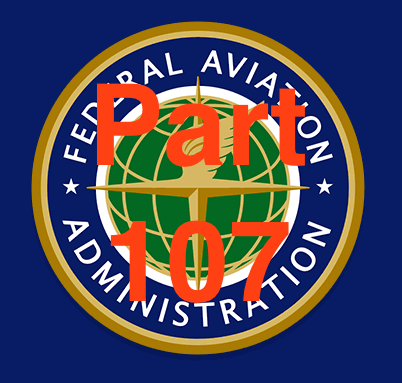 The FAA announced today that they have finally released Part 107, the Small UAS Rule, after several years of missed deadlines.
The FAA announced today that they have finally released Part 107, the Small UAS Rule, after several years of missed deadlines.
“We are part of a new era in aviation, and the potential for unmanned aircraft will make it safer and easier to do certain jobs, gather information, and deploy disaster relief,” said U.S. Transportation Secretary Anthony Foxx in the FAA’s statement. “We look forward to working with the aviation community to support innovation, while maintaining our standards as the safest and most complex airspace in the world.”
The new rule, which takes effect in late August, will streamline the process for commercial drone operators to get the appropriate certifications, limiting the need for Section 333 Exemptions and dropping the requirement that commercial drone operators have a manned aircraft pilot’s license.
While the new rule will allow more operators to become commercially certified for some of the existing drone applications, strict operational limitations are still in place. The regulations still require that drones be flown only in visual line of sight (VLOS) and during daylight hours; drones are still prohibited from operating over people not directly participating in the flight; and there are still strict height and speed limitations. Any industrial applications that require operation outside of these restrictions will mean that an operator will have to apply to the FAA for a waiver.
“With this new rule, we are taking a careful and deliberate approach that balances the need to deploy this new technology with the FAA’s mission to protect public safety,” stated FAA Administrator Michael Huerta. “But this is just our first step. We’re already working on additional rules that will expand the range of operations.”
Drone industry stakeholders agree that Part 107 is a step forward, while looking forward to seeing some operational limitations removed. Mike Winn, co-founder and CEO of leading drone mapping and analytics company DroneDeploy, says that the new rule could give the U.S. industry a significant boost: “The introduction of Part 107 means that companies operating in the U.S. can now be more competitive with companies operating in other countries. The new regulation allows companies in the U.S. to take advantage of all the benefits offered by commercial drones…Once Part 107 is implemented we’re excited to see what the FAA addresses next. We think there are still two big areas that can meaningfully impact commercial drone adoption in the US: the creation of a micro drone category and establishing rules for BVLOS (Beyond Visual Line of Sight).”
Under Part 107, commercial drone operators will now need to be at least 16 years old and have a remote pilot certificate with a small UAS rating, or be directly supervised by someone with a remote pilot certificate. Operators will need to pass either an “aeronautical knowledge test” at an FAA-approved knowledge testing center, or have an existing non-student Part 61 pilot certificate. Operators with a Part 61 certificate must have completed a flight review in the previous 24 months and pass the FAA’s online training course.
Two controversial items that had been previously discussed – background checks and airworthiness certification – seem to have been resolved moderately. The TSA will conduct a security background check of all remote pilot applications prior to issuance of a certificate, but the FAA will not require small UAS to comply with current agency airworthiness standards or aircraft certification. Remote pilots will have to perform a “preflight visual and operational check” of their drone to ensure that “safety-pertinent systems are functioning property.”
Part 107 will only apply to commercial operators; it will not apply to model aircraft. Hobby or recreational aircraft will still need to be registered before flight at the FAA website.
A summary of Part 107 can be found here on the FAA website; the complete document can be found here. Keep checking DRONELIFE for more information this week on Part 107 details.
Source link
 Unmanned Aerial Vehicle The latest drone news
Unmanned Aerial Vehicle The latest drone news


